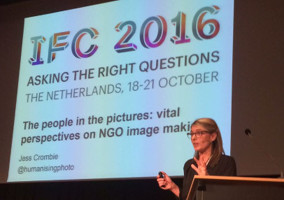At Shelter, like many charities, we talk a lot about the people we help. We talk about them in political briefings, in annual reports, in fundraising materials. And each time we do, we adapt our language so that it resonates with our target audience.
But, when we tailor our communications are we thinking enough about what this means to the people we are speaking about? Would they recognise themselves? Would they be offended by the way they are described? Are we misreporting their experience?
Our new research, published today, shines a light on these challenging questions. We asked Kantar Public to interview almost 50 people who had experienced homelessness or struggled with paying housing costs, to better understand how they themselves would like to be represented.
The first thing we looked at was how charities currently describe this group. We found that they describe them in a wide range of ways. For example, they relate the group to other sub-sections of the population e.g. ‘typical families’ or ‘people in poverty’; they describe the day to day experience of having a low income e.g. ‘families struggling to get by’; or they describe the negative impacts of being in this situation e.g. ‘vulnerable people’ or ‘destitute’.
But when we asked people to define their own situation, two strong themes came through.
Firstly, people characterised their situation as being hard work. They focused on the active choices they had made to try and overcome the challenges they faced.
Therefore, people strongly preferred descriptions that were specific and active. For example, ‘families that need to top up their income’. On the other hand, vague adjectives like ‘poor’, ‘destitute’ or ‘vulnerable’ felt like passive labels, which contradicted their experiences of working hard to improve their situation.
Secondly, the group we spoke to strongly related their situation to their own immediate environment, their own journey and people they know. Rather than seeing themselves as being in a relatively bad situation (compared to the rest of the population), people instead described their good fortune and luck. There was a strong feeling that there was always someone worse off than themselves, particularly within their own social networks. They downplayed difficult housing situations as ‘normal’ and felt that homelessness could happen to anyone.
As a result, terms which group people into sub-sets of the whole British population, such as ‘people in poverty’ meant very little. Instead, people liked phrases that acknowledged housing struggles could be commonplace, but also acknowledged that people’s experiences are unique to them.
Overall, the most popular communication style was one that brought these two together - active phrases that allowed people to project and infer their own personal circumstances. For example, the term ‘hidden homeless’ not only described a physical action, but allowed people to project different meanings of ‘hidden’. This ranged from the idea of sleeping in a back street, to feeling that they were low (or ‘hidden’) on the political agenda.
No one Kantar Public spoke to recalled feeling patronised or offended by a charity campaign, but all of us could do with the occasional prod to keep the views of the people we are there for at the front of our thinking.
We’ve made a conscious effort to listen to those we campaign for and reflect their thoughts in the way we communicate with public audiences. We would encourage others to do the same; to ensure our work remains truthful and so we can engage with, and draw on, people’s passion to create change for themselves and others.
Jenny Pennington is a senior research officer at Shelter
|
Related articles












